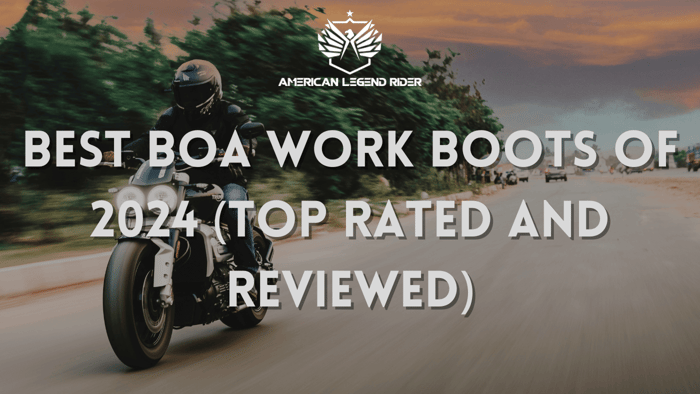Motorcycle trips can be fantastic, thrilling, and a unique adventure. However, they can also present challenges that might potentially spoil the experience. Planning for motorcycle road trips is just as important as the journey itself. Understanding what to pack and carefully considering the details contribute to an ideal motorcycle trip. In this article, we will discuss the essential tips to keep in mind when planning for a motorcycle road trip.
Preparing for a motorcycle road trip
There’s no better way to see the vast expanse of the United States than going on a cross country motorcycle trip. Traveling on a motorcycle means you are more connected to your surrounding than traveling in a car. You feel the sensations down your spine, smell the scent of wildflowers on the road side and hear the sounds of the rushing rivers as you cross above them. Every twist and turn on the road becomes an integral part of the experience and every curve you go through makes you want more of it. Going on a motorcycle road trip requires prior preparation, which must be done carefully putting into consideration all the necessities for safety and comfort.
The road tripping experience though fun and adventurous, can also turn chaotic and dangerous. Unique challenges such as unpredictable weather and extreme road conditions can prevent you from truly giving it your all; actually encountering dangerous wild animals. For this reason, route mapping is essential for planning for the safest and most convenient motorcycle touring.
Having ridden a motorcycle on multiple continents and varying conditions, I’ll be the first to admit the unpredictability that lies ahead. But nevertheless, all these elements contribute to a memorable experience that you should not be afraid to try. Most new motorcycle road trippers often forget the most basic steps in preparation for the journey. And here’s where the problem lies.

Choose the right bike for the trip
I always consider myself pretty good at using anything at my disposal for whatever purpose that I intend. But that cannot be said of motorcycle trips. Your steed may not be the best fit for the type of riding that you plan on doing.
Riding your own motorcycle can save you on costs and give you a sense of confidence on the road but it may not always be the best two-wheeler for certain types of riding. Consider the type of riding and if the current bike fits the bill. If not, then you have the option to rent a motorcycle with the correct weight and height for your riding needs while on the trip.
Your comfort during the road trip is absolutely vital to prevent you from cramping and fatigue. Since you will be seated for hours on end in the same riding position, it is critical that the bike is optimized for this. The handlebars, foot pegs, suspension, and seat height should be adjusted and properly set up for your height and seating position.
Forgetting something? Don’t forget storage and motorcycle luggage space. The best road trip motorcycle should come with built-in storage and have room for added storage. Since you will be needing a few more clothes, gear and stuffs along the way, it is best to know what is absolutely necessary for the road trip. You’ll need to be smart with how you pack your essential items.
Luckily, some motorcycles allow you to fit in saddlebags if it doesn’t already have one. This can save you lots of space and provide you with enough room to store what you need. Is the motorcycle saddlebag waterproof in case of extreme weather? Is it lockable should you need to leave your motorcycle unattended? These are important considerations to keep in mind when choosing the best road trip motorcycle.
Finally, decide on the kind of riding you will be doing. Do you plan on going off-road or sticking to asphalt roads? Will you be riding on a mostly straight road, or a twisty road sandwiched with canyons? How far will you go before refueling? If something happens and you drop your bike, will you be able to pick it up yourself? The answers to these questions should help you narrow down your choices and find the correct bike for road trips. The different types of motorcycles are designed for various riding needs and knowing which one to choose will make the work easier for you. Whether it’s a cruiser, touring motorcycle or a sport bike, the choice depends on what your riding will be.
Once you have your two-wheeler ready for the adventure ahead, it is time to pack what you need for the journey. First, know what to pack for a motorcycle trip by creating a checklist of the absolute necessities.
Consider the weather conditions
Part of riding a motorcycle means being exposed to all kinds of extreme weather conditions and having to bear with them. Whether you like the wind blowing through your hair and face, or fog forming on the surface of your goggle’s lenses, you may need to prepare for all kinds of unpredictable weather. Get ready to feel every gust of wind, rain drop, and snow and desert heat and still not be deterred on your journey.
Depending on several factors such as elevation, time of day and seasons, temperatures can vary wildly. You can move from freezing cold, to rainstorms and sweltering heat in a matter of hours. This can sometimes pose a challenge to your progress, and be even dangerous subject to the intensity of the elements. Riding for long hours under these extreme conditions can be physically draining. To make sure you are on the safe side, always dress heavy and pack layers that you will strip down as need along the journey.
While this is primarily to help in coping with the weather, it is also important for your safety in case of an accident. Protective motorcycle gear with built-in armor is preferred in this scenario.
Pack up your waterproof gloves, rain suits, and boots and keep them close by should you need to pull them out easily when the weather turns for the worst.
If you decide to make your road trip during winter months, you might want to invest in some heated gear for added warmth. The best time to buy winter gear is during summer when the prices are considerably lower. I promise you will be thankful that you bought these essential protective motorcycle gear earlier as you will manage to stay cozy even in frosty weather.
Make frequent rest stops
When making a long trip, you should stop for a rest. Long hours riding a motorcycle can take a toll on you and make every part of your body hurt. To ease the pain, you should take frequent breaks with snacks on the side to give you more energy for more miles ahead. Stretch every time you stop, get off the bike and talk a short walk. Do this for at least 15 minutes and you will feel rejuvenated. It is recommended that you take a break every 100 miles to help combat travel fatigue and also prevent muscle aches.
Keeping yourself hydrated is very important as it increases your energy levels and relieves fatigue. Make sure you carry plenty of water and snacks to keep you energetic and along on the long motorcycle rides. If you are making the road trip during summer months, you may need to stop more frequently than normal in order to stay hydrated. Don’t forget to take quick snacks between your main meals to keep your blood sugar levels regulated.
You can carry food items such as energy bars, fruits and nuts that tend to stay fresh even in temperature changes. Every time you come to a stop, take time to stretch, take a snack and drink water before resuming your journey. This will make your whole trip more balanced and enjoyable.
Carry tools
Motorcycles are prone to breaking down and there’s no exception to whether it’s a new motorcycle or a recently serviced one. To always be on the safe side, ensure that a professional checks your motorcycle before heading out for a road trip. Make sure that your brakes, fluid levels, bolts are as they should and that there are no mechanical problems. It is always wise to hope for the best but prepare for the worst.
While on the trip, remember to bring tools in case some parts of the motorcycle rattle loose, tires wear out or if you need to refill the oil. A basic toolkit for all manner of roadside fixes will be enough for the most part.
Not all tools are the right size for your motorcycle so you should consider double-checking beforehand. It’s even better if you can find your motorcycle manufacturer’s pre-assembled tool kits as they are the best tools for any fixing job that you may have to tackle.

Have backup plan
It’s quite normal for things to turn out much different from what we expected and many things to not go according to plan. This is true for all kinds of travel but even more so when it comes to motorcycle touring. For example, you may encounter extreme weather conditions that force you to abandon the initial plan, or bad road conditions that make it difficult to complete the road trip. Regardless of what it is, you should always have a standby plan should anything not happen according to plan.
Having to re-route becomes the only option because of some of the sudden changes that you could not foresee. The most important thing is to learn to adapt and adjust to some of these unexpected changes and just go with the flow.
While taking a detour is something many people view as an inconvenience, it may end up being the best thing that could happen in your trip. An unplanned veering off the road could lead you to some interesting destinations, breathtaking views, and other roadside attractions that you wouldn’t have discovered in your original route.
In summary, always have a backup plan and room for the unexpected and be ready to adapt to changing situations.
Avoid riding in the dark
I often get asked how far a motorcyclist should ride in a day. The answer varies depending on a rider’s skill level, endurance, road conditions, experience, and type of bike. One thing for sure is that a rider with a motorcycle with fairings and windshields can ride more miles because the rider is not fighting wind resistance.
The important thing is to avoid riding when it is dark and your visibility is limited. At this point in time, you are also fatigued from riding throughout the day. While there is no right or wrong answer when it comes to how many miles one should ride in a day, most will agree that 300 miles is a pretty good distance to cover. But more importantly you should consider yourself and try as much as possible to enjoy the experience.
After all, riding a motorcycle is all about getting away from the rules and feeding your desire to conquer the road.
If you are riding for several days, consider taking a whole day off after every seven days of riding. A day’s rest is enough to recharge and reflect through the journey. You also get the chance to visit local shops, jewelry stores and eateries of the place where you are resting from. There always plenty of things to do when you take a rest. You also come up with motorcycle road trip ideas that you had not figured out before.
















